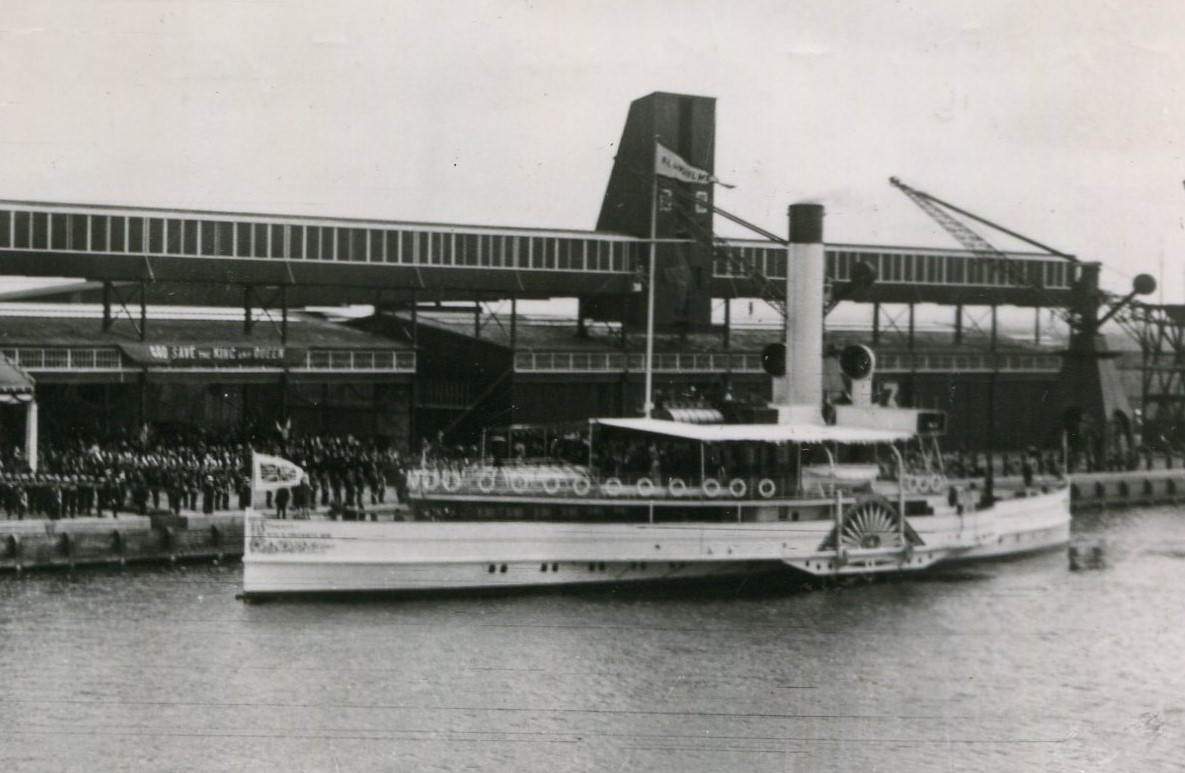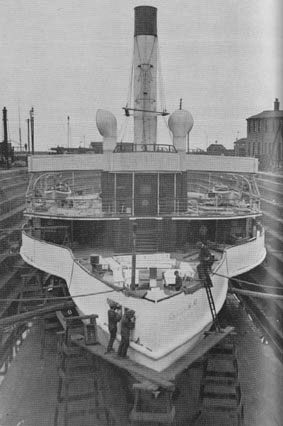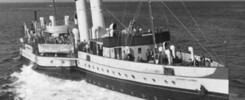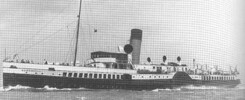
The paddle steamer Killingholme and her sister the Brocklesby, both built in 1912 for the Great Central Railway ferry service across the River Humber between Hull and New Holland, must surely be amongst the oddest pair of paddle steamers ever built. So odd were they that one cannot help but wonder why they were built like it. Did the naval architect who drew up their plans have a well developed sense of humour? Did he consciously set out to produce paddlers of a radically different and modern design which might serve as a model for future builds elsewhere? Or did he just consider practical features more highly than aesthetic results?
Whatever the reason, the Killinghome and Brocklesby did have a number of very practical features. They were bigger and better appointed with more undercover accommodation than their predecessors. Their gigantic funnels may have been verging on the absurd but their extreme height would have produced an excellent draught through the boiler as well as carrying the smoke way above the heads of the intending passengers standing on the piers, even at low tide. The double ended design was not necessary for the service but it might have been thought to cut down the crossing time by a fraction thus making a minor saving in fuel by obviating the need for a turn at each end of the run.

Killingholme and Brocklesby were also fitted with glazing at the forward and aft ends of the bridge (shown in the picture above) a feature which must have pleased the captains on cold windy nights.This addition became quite common on the bridge wings of many ferries and other vessels after the Second World War but, in 1912, it was was a distinct rarity and well ahead of its time.
The picture above shows the Killingholme in dry-dock being painted white and having her name changed to Queen Mary for a royal visit by King George V and Queen Mary for the official opening of the new dock at Immingham on Monday 22nd July 1912. Unfortunately, having painted in the new name it had to be painted out again before the big day as an administrative muddle left insufficient time for the change to be formally approved. So it was as the Killingholme rather than the Queen Mary that the ship discharged her regal duties.

The dock opening was quite a festive occasion with plenty of brass bands, local civic dignitaries in their finery and fluffy hats and troops standing to attention with guns. Later in the day Mr Sam Fay, the Great Central Railway’s General Manager, was called forward to meet the royal party in one of the dock sheds whereupon the King called for a sword and knighted him.
The Brocklesby was withdrawn after the introduction of the Tattershall Castle and Wingfield Castle in 1934 but spent a further couple of years running excursions for the Redcliffe Shipping Company on the Firth of Forth before being scrapped. The Killingholme continued to act as relief vessel and run excursions on the river, particularly from Grimsby, until the arrival of the new Lincoln Castle in 1941 displaced her.
Along with her consorts, Killingholme saw war service at home on the Humber as a Barrage Balloon Vessel with the balloon tethered to her deck, the aim being for the wires to get in the way of incoming enemy aircraft. She was scrapped in 1945.
Kingswear Castle returned to service in 2023 after the first part of a major rebuild which is designed to set her up for the next 25 years running on the River Dart. The Paddle Steamer Kingswear Castle Trust is now fund raising for the second phase of the rebuild. You can read more about the rebuilds and how you can help if you can here.
John Megoran


